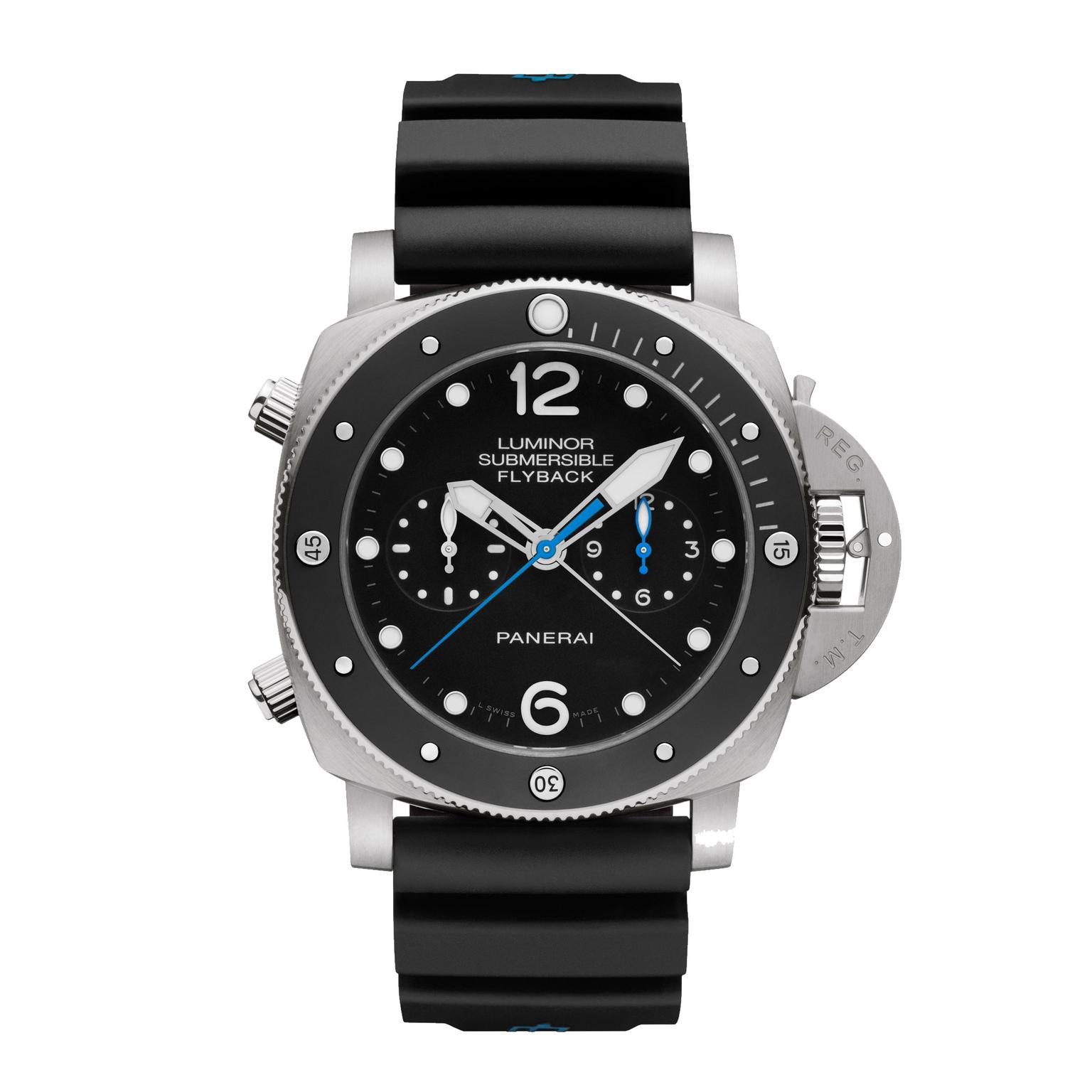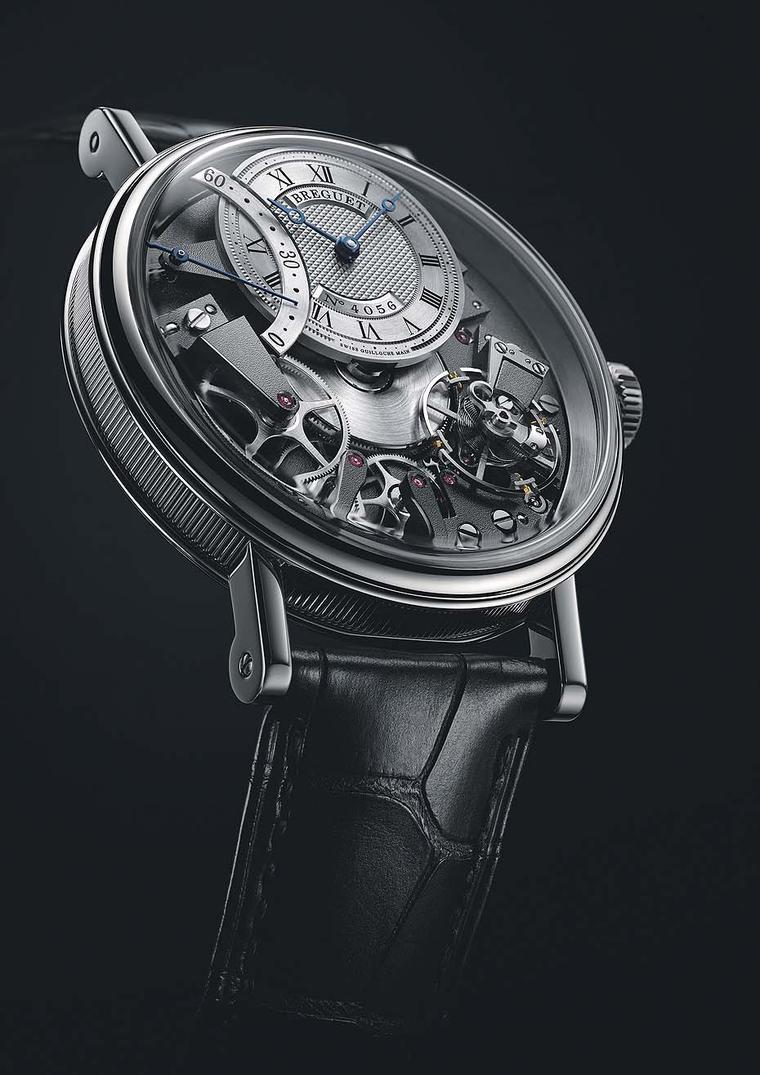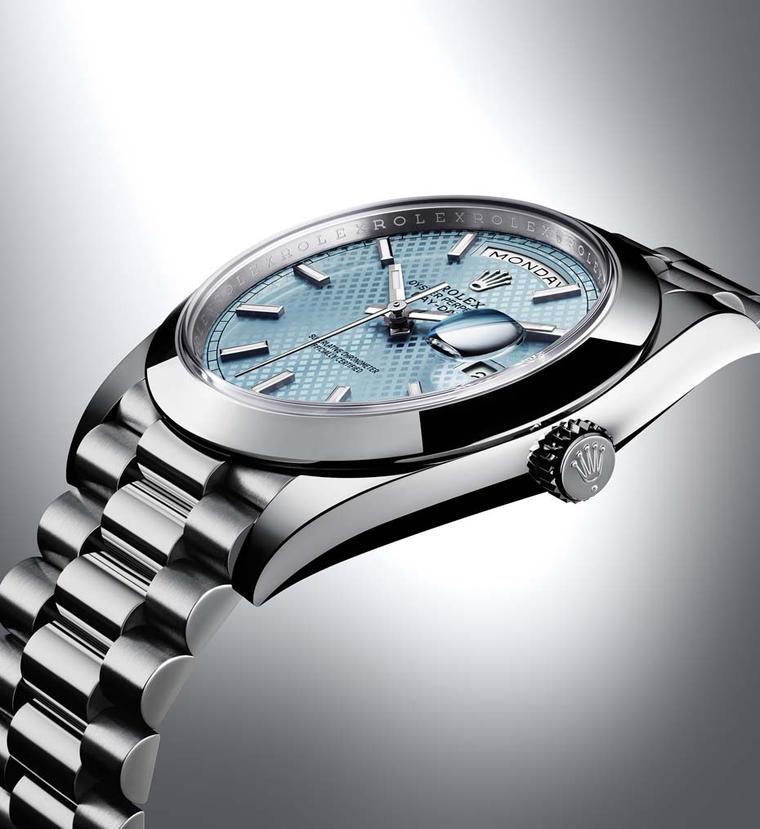
By Rebecca Doulton
A top military secret up until very recently, Panerai watches have illuminated the darkest corners of the ocean beds, accompanying Italian Navy frogmen on their secret underwater missions during World War II. The saga of this action-packed Italian thriller begins on a bridge over the River Arno of Florence, then takes us under the keels of British battleships in the port of Alexandria, and finally resurfaces as a civilian brand with a powerful cult following.
On 19 December 1941, Italian Navy divers of the X Flottiglia MAS perpetuated what has gone down in history as the Raid on Alexandria. Straddling their seven-metre-long submersible torpedoes like underwater motorcycle drivers, six Italian frogmen - two per torpedo - single-handedly put British battleships HMS Valiant and HMS Queen Elizabeth, as well as a nearby Norwegian tanker Sagona, out of action and almost changed the course of the war. Admiral Andrew Cunningham, Commander in Chief of Britain's Mediterranean Fleet headquartered in Alexandria, summed up the prevailing mood: "Everyone has the jitters, seeing objects swimming about at night, and hearing movements on ships' bottoms. It must stop!"
The "objects swimming about at night" were in fact members of the elite 10th Light Flottila, whose underwater missions wreaked havoc in the port of Alexandria and other targets in the Mediterranean. The Italian Navy fleet, under the command of the Fascist Dictator Il Duce, could not match the British fleet in size and recurred to its commando of stealth divers. It is estimated that between 1940 and 1943, these human torpedoes undertook about 25 missions in the Mediterranean. Nicknamed the Floating Trojan Horse after an attack in Gibraltar's waters, the commando was one of the most effective units in the history of special operations and gained a deadly reputation for its covert underwater torpedo operations. In his secret war speech made to a closed House of Commons in April 1942, Winston Churchill recognised the lethal efficacy of the "Italians in unusual diving suits" who had managed to attach limpet bombs to the hulls of Britain's battleships "with extraordinary courage and ingenuity". Even Admiral Cunningham had to concede: "One cannot but admire the cold-bravery and enterprise of these Italians."
Read about Panerai on our list of top five iconic watches
Using specially designed Italian submersible torpedoes - known as a Siluri a Lenta Corsa (slow-moving torpedoes) but nicknamed pigs due to their poor and slow handling - the divers would steer their explosive cargo to the established target and detach the delayed action limpet mines from the front of the pig, and attach them to the hull of the battleships. In the case of the Alexandria Raid, the intrepid divers had to make their way through metal nets placed in the harbour by the British to impede their access. Timing was obviously a matter of life and death, and the frogmen relied on the novel luminous devices created specifically for the Italian Navy by a Florentine watchmaking company known as Panerai. A top-secret operation, Panerai was the sole provider of measurement and precision underwater instruments - including depth gauges, wrist compasses, detonators and sights - and a large luminous waterproof wristwatch that would earn a place in the iconography of watchmaking known as the Panerai Radiomir.
In addition to its high-quality instruments and watches, its conquest of luminescence signalled its superiority in the field. The two Panerai watches it named in honour of the luminescent materials that made them glow in the dark - Radiomir and Luminor - are still the only two models the brand produces today, excepting the occasional re-edition of the Mare Nostrum, L'Egiziano and some collectors' pocket watches.
The Panerai saga started in 1860 in Florence when Giovanni Panerai opened a tiny watch shop on the Ponte alle Grazie spanning the Arno River. The bridge was destroyed in 1944 by retreating Germans, but the original 13th century bridge - at that time the oldest and longest bridge in Florence - had small shops on it, much like the Ponte Vecchio does today. Giovanni's Orologeria was the first watch and clock shop in Florence and sold imported Swiss pocket watches. As related in Giampiero Negretti's excellent book on Panerai's history, pocket watches were sent from Switzerland unassembled, requiring the Florentine entrepreneur to invest in a workshop and learn the tricks of the trade.
As purveyors of the finest Swiss watch brands, Giovanni's descendants, Guido and Giuseppe Panerai, struck gold when Italy's Regia Marina, or Royal Navy (1861-1946), contacted them for precision pocket watches and chronographs, many of them modified by Panerai watches to meet the Navy's requirements. By the beginning of World War I, Panerai was making sophisticated made-to-measure precision instruments for the Italian Navy. A brilliant breakthrough was just around the corner, and its decision to combine Radiomir, a luminous radioactive substance that glowed in the dark, with a gun sight, for example, allowed weapons to be fired in total darkness. Luminescence was the key to success and Panerai was able to outshine its rivals with the application of Radiomir paste to its high-precision instruments, illuminating timers for detonators, and underwater wrist depth gauges, wrist compasses and torches.
Radiomir is derived from radium, one of the most radioactive chemicals on the periodic table and was discovered by Nobel prize-winning scientist Marie Curie - who died from its lethal side-effects. The virtue of Radiomir, which was the name Panerai patented for its mix of radium bromide and zinc sulphide in 1916, was its superlative luminescence and capacity to glow in the darkest, dankest waters. Using Panerai's luminescent underwater instruments, in 1918 Italian stealth commandos Rossetti and Paolucci were able to steer their modified torpedo - known as the leech - and sink the Austrian dreadnought battleship SMS Viribus Unitis by planting a limpet mine on the hull of the ship. The brightness of Radiomir was so intense at night that commandos would smear mud or seaweed on the dials to avoid being spotted.
Such was the success of these stealth missions that, in 1935, the Italian Royal Navy asked Panerai to develop waterproof and luminous men's watches. The specs were that the watch have a large dial and be perfectly legible in even the most adverse conditions, including muddy port waters. In 1936, 10 prototypes of the Panerai Radiomir watch were distributed among the frogmen commandos, thus becoming the first professional underwater military watches in history. What is particularly interesting for watch fanatics is the fact that the movement and case were entrusted by Panerai to Rolex.
As the inventor of the world's first civilian watertight watch in 1926, put to the test on Mercedes Gleitze's epic cross-Channel swim in 1927, Rolex had the technological know-how. The first Panerai Radiomir men's watches measured a hefty 47mm in diameter and were housed in a cushion-shaped steel case with a screwed-down crown and caseback and soldered lugs. The dials featured a mix of luminescent Arabic and Roman numerals and the men's watches came with a long, greased waterproof leather strap that could be worn over the bulky diving suits. Modifications requested directly by the divers ensued over the following years and, by 1940, the Panerai Radiomir assumed its definitive physiognomy, which any Paneristi would recognise in a flash. With a stronger case made from a single block of steel for increased underwater resistance and reinforced lugs, the dial of the watch was simplified with just four large Arabic numerals at 12, 3, 6 and 9 o'clock, plus hour and minute hands. Like its predecessor, the watch boasted superior luminosity thanks to the use of a sandwich dial consisting of two overlapping plates. The upper dial featured the four large perforated numerals and indices allowing the thick layer of radium paste on the lower dial to glow through the holes.
By 1949, the toxic effects of radium were better documented and the less toxic element tritium was adopted by Panerai watches and patented under the Luminor trademark. The Panerai Luminor watch of 1950 confirmed the company's vocation as a professional dive watch manufacturer. With a very similar dial and case, the big difference over the Radiomir model was the large crown-protecting bridge with a lever to increase the watch's waterproof properties - something the Luminor family still bear today.
The Mare Nostrum watch of 1943 was designed for naval deck officers and featured a two-counter chronograph and the hallmark luminescence that characterised the brand's products. Word of these superlative Panerai watches spread and, in 1956, the Egyptian Navy commissioned a watch that would become known as L'Egiziano. To describe this watch as large is an understatement. Its formidably strong 60mm case featured a novel rotating bezel with four studs to indicate immersion times - capable of withstanding depths of up to 200 metres - and an impressive eight-day power reserve, which reduced the frequency of winding operations. In addition to the crown-protecting device, this massive diving partner featured a small seconds counter on the dial at 9 o'clock. L'Egiziano still makes guest appearances in Panerai's limited edition collections, such as this 2009 whopper in brushed titanium - a definite plus over the original steel version thanks to its lightweight properties.
By 1972, the last Panerai descendant, Giuseppe Panerai, died without offspring and the company was run for a brief period by his widow until the brand was given an ultimatum. Either Dino Zei, a retired Navy Colonel who had been in charge of procuring instruments and armament for the Navy's top-secret operations, take over the company, or the brand's main client - the Navy - would close it down. Zei changed the name of the company to Officine Panerai and continued to supply the Navy with wrist depth gauges, compasses and underwater torches. In 1993, Zei presented a collection of limited edition civilian watches inspired by historical models created for the World War II commandos, which were immediately swept up by collectors.
In a moment of cinematic serendipity, a Panerai watch unknowingly made a screen cameo on the wrist of American actor Sylvester Stallone in the 1996 film Daylight. According to legend, the actor saw the Panerai Luminor Marina Submersible in a shop window while filming on location in Rome and was drawn to the imposing character of the military watch, which fit perfectly with his on-screen persona. "When I saw the watch, I immediately felt that it had star power," remarked the Hollywood muscle man who, like many civilians, had never heard of the brand. In return for the unsolicited exposure, a solid friendship has developed between Sly and the brand and there is even a collection of Panerai Luminor Submersible Slytech models in his honour.
In 1997, Officine Panerai was acquired by the Richemont Group (then known as the Vendôme Group) and the entire military production branch of the company was closed. A year later, the first collection of Panerai watches was presented to the public. Large, functional, military watches coupled with pure Italian design sparked an overwhelmingly enthusiastic response spawning a fan club of die-hard Paneristi.
American designer Ralph Lauren, who has a large collection of Panerai vintage watches, put his finger on what makes this brand so appealing to men today: "The luxury of Panerai grew out of its heritage and the purposefulness of each detail. Panerai watches were not about the latest fashion, they were designed to work in specific conditions. Their form and beauty were secondary to their function; they're rugged, utilitarian and handsome."
The brand's strong association with the sea has taken a more recreational turn and, in 2006, Officine Panerai bought and restored Eilean, a 1936 Bermudan ketch sailing boat built in Scotland. Three years of restoration ensued to bring her back to her original splendour and she now competes in vintage yacht races around the world. The Panerai Classic Yachts Challenge, which started this year with the Antigua Classic Yacht Regatta and will culminate with the Cannes Regates Royales in September, has been going strong now for 10 years and every edition of the race is celebrated with the launch of a Regatta watch. This year, the Panerai Luminor Submersible 1950 3 Days watch, has been released in a limited edition of 50 pieces to commemorate the 10th anniversary of the race. And just in case anybody was concerned about the toxicity of the luminosity of the dials, Panerai uses the best Swiss luminescent material known as Super-LumiNova on all its watches today.
The headquarters of the company are still in Italy, but production is now in Switzerland in a state-of-the-art manufacture just outside Neuchâtel. The first in-house movement appeared in 2005 and, to date, 21 proprietary movements with increasing complications have been developed by the company. Angelo Bonati, CEO since 1997, sees no conflict whatsoever in making luxury watches with a profound Italian soul and past, beating to a Swiss heart: "We have always declared that Panerai has Italian taste and Swiss technology because you cannot have the same efficiency in terms of know-how in Italy regarding watches." Watches are often sold out before they reach the retailer's shelves and for practically the last two decades Officine Panerai has stayed on course, true to the quintessential and now iconic design of its star models: the Radiomir and the Luminor. Bonati sees no reason to change direction or adapt models for different markets. "We surprise people by being coherent," he adds, and for Paneristi fans around the world, this is music to their ears.
Read more on Panerai watches in our top ten trends list






















